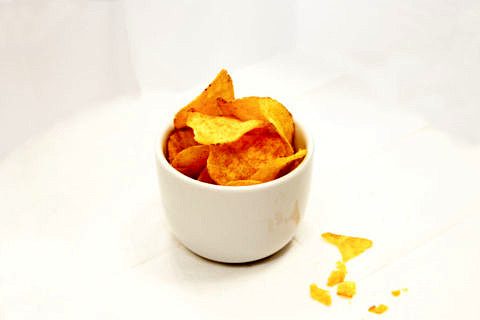What makes us keep snacking?

Ratio of carbohydrate and fat is a deciding factor
For many of us, once we open a packet of crisps there is no stopping us – we keep eating until it is empty. Food chemists at FAU have now discovered a possible explanation for why some types of food are more tempting than others. Contrary to previous assumptions, the ratio of certain components in food plays an important role here: 50 percent carbohydrates and 35 percent fat makes us want to snack. The researchers recently published their findings in the journal Scientific Reports*.
For their study, which was carried out as part of the Neurotrition project funded by FAU’s Emerging Fields Initiative, a team of researchers led by PD Dr Andreas Hess, Institute of Experimental and Clinical Pharmacology and Toxicology, and Prof. Dr. Monika Pischetsrieder, Chair of Food Chemistry, presented rats with different kinds of food: normal food and samples of food in which they varied the ratio of carbohydrates and fat. Their findings showed that the animals ate the most within a very short time when the food was made up of 50 percent carbohydrates and 35 percent fat. When this was the case they ate three times as much as normal. This 50:35 ratio corresponds exactly to the ratio in crisps, chocolate and chocolate spread, for example. The researchers subsequently examined the animals using a non-invasive small animal MRI scanner and discovered that the 50:35 ratio corresponded to increased brain activity in the regions that are associated with rewards and addiction. However, the effect was not as pronounced as it was in previous studies where the animals were given potato crisps to eat.
Based on their findings, the researchers came to the conclusion that it is not the sheer amount of calories in food but the specific ratio of the two main sources of energy, carbohydrates and fat, that tempts the rats to over-eat. However, the comparison with the results of the potato crisps experiment also led them to conclude that there must be other factors that trigger a desire for more.
How can this specific ratio be explained? Carbohydrates provide a quick source of energy while fat ensures a long-term supply. The researchers suspect that the 50:35 ratio is the most effective for the body and that we have therefore evolved to prefer these kinds of foods. This is an advantage when food is scare but is a problem when too much is available. ‘The loss of control leads to eating more than necessary; weight increases and this leads to the typical health problems that are caused by being overweight,’ explains Prof. Pischetsrieder.
The researchers now intend to carry out further studies to test their hypothesis that the mechanism that they have discovered functions in a similar way in humans. ‘However, sensory perception almost certainly plays an important role here,’ says Prof. Pischetsrieder. Furthermore, the researchers aim to identify other triggers that give us an appetite for snacks and sweets. In the long term, their findings could help to develop medications or additives that block or reduce our desire for things like potato crisps and chocolate that make us gain weight.
*doi: 10.1038/srep10041
Further information:
PD Dr. Andreas Hess
Phone: +49 9131 8522003
andreas.hess@fau.de
Prof. Dr. Monika Pischetsrieder
Phone: +49 9131 8524102
monika.pischetsrieder@fau.de